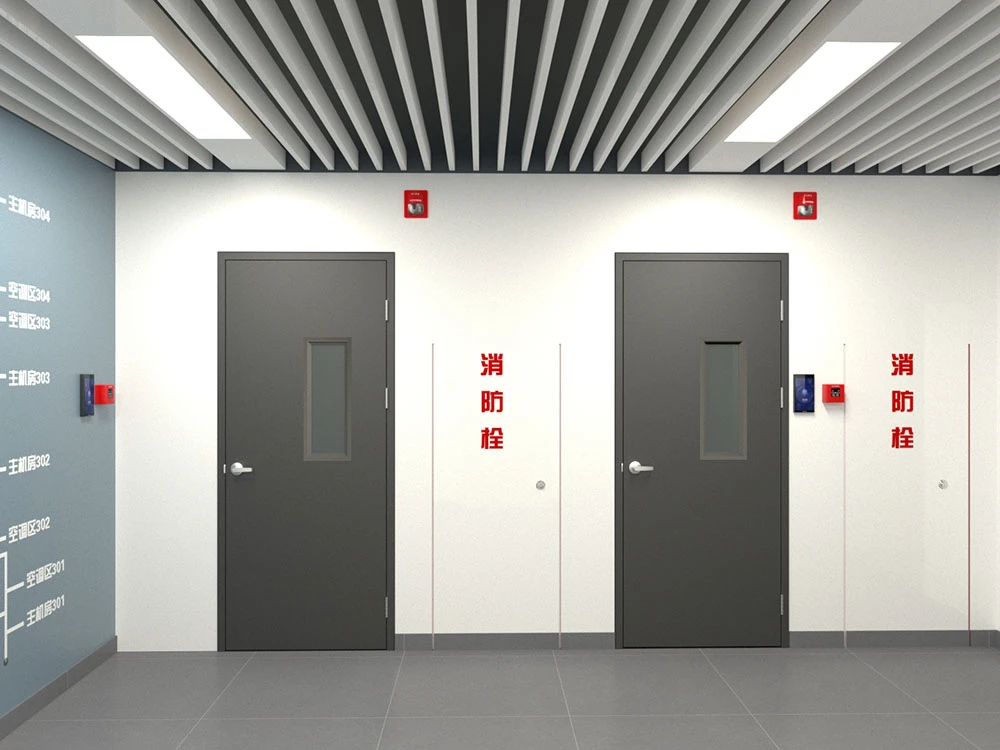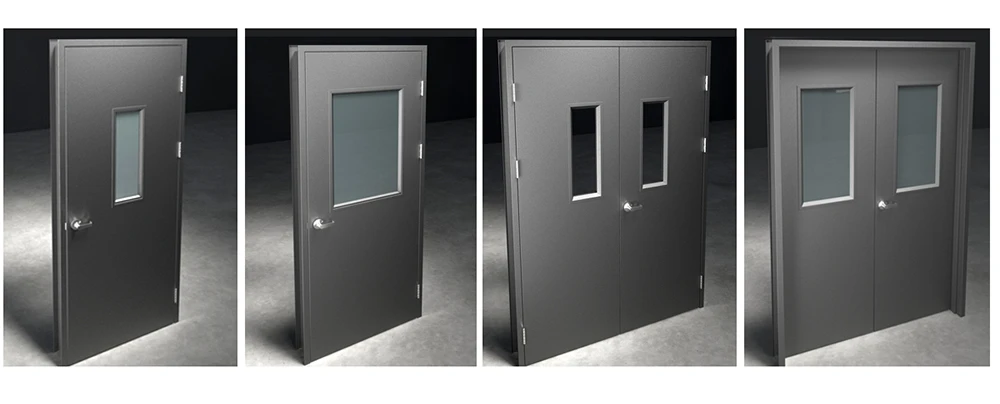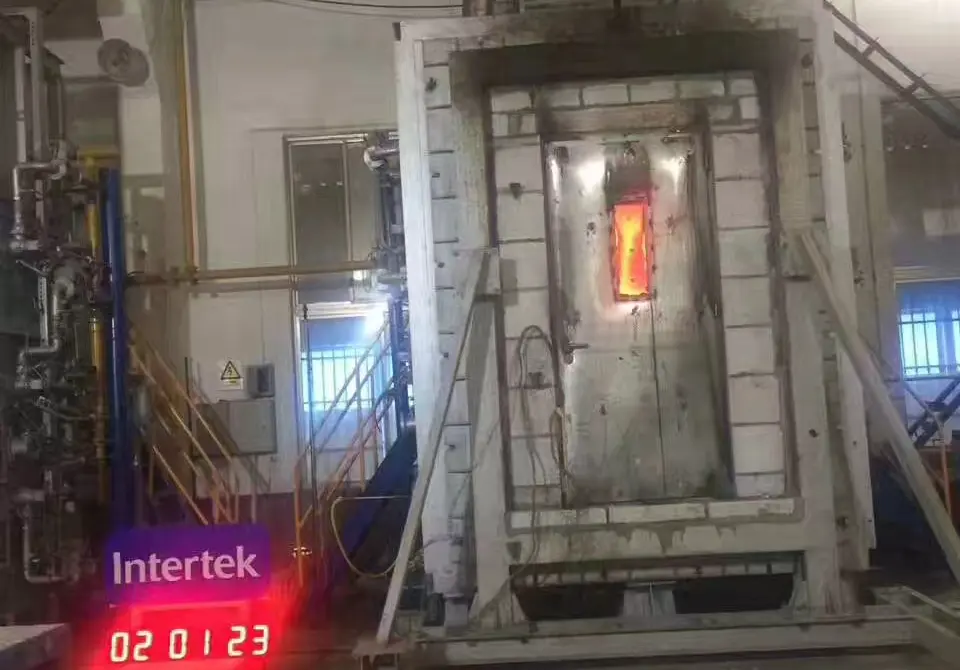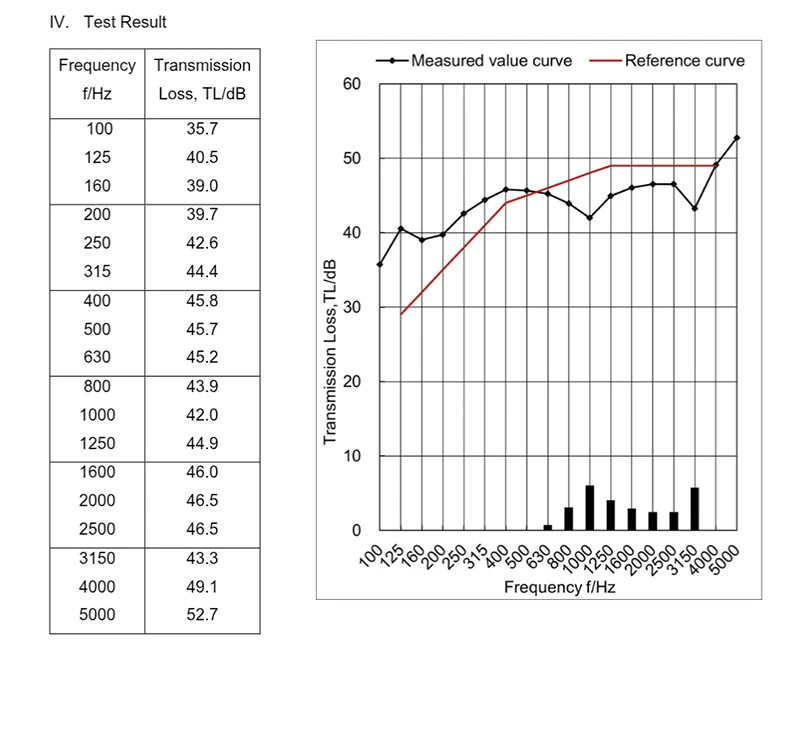How to Choose the Right Commercial Steel Door: 12 Key Factors to Consider
When it comes to securing and optimizing a commercial space—whether it’s an office building, factory, school, hospital, or warehouse—selecting the right commercial steel door (also known as a commercial metal door) is a crucial step. These doors do far more than open and close. They impact your building’s safety, energy efficiency, functionality, and appearance.
So how do you choose the right commercial steel door for your project? The ideal door depends on your specific needs and environmental requirements—such as lighting, ventilation, fire rating, and more.
Below are 12 key factors to consider when selecting a commercial steel or metal door.

1. Door Configuration: Based on Structural Opening
The width of the opening at your installation site determines the basic type of door configuration:
- Single Door: If the opening is less than 1200mm, a single leaf door is sufficient. This is the most common choice for internal office doors and small rooms.
- One-and-a-Half Door: For openings between 1200mm and 1400mm, a one-and-a-half door provides flexibility. It has one main operable leaf and a smaller secondary leaf used occasionally when a wider opening is needed.
- Double Door: For openings greater than 1400mm, a double-leaf door is recommended. Ideal for entrances, corridors, or heavy-traffic areas, this setup allows easy access for both people and equipment.
Choosing the correct door size helps with accessibility, code compliance, and day-to-day functionality.
2. Access Requirements: Swing Direction
How the door opens can affect movement, safety, and convenience:
- Normal Swing: Opens in one direction—either inward or outward. This is standard in most commercial settings.
- Double Swing: Opens both inward and outward, allowing for faster movement and better traffic flow. These doors are perfect for healthcare facilities, kitchens, or warehouses where equipment and people move freely and quickly.
Double swing doors often come with spring hinges that automatically return the door to the center position.
3. Lighting and Visibility: Glass Options
If your application requires visibility, supervision, or natural lighting, adding glass panels is a smart option. But not all glass is created equal. Here’s how to choose:
Glass Types:
- Wired Glass: Reinforced with metal wire mesh to prevent shattering. A safety option for areas where impact resistance is critical.
- Laminated Insulated Glass: Consists of multiple glass layers with an inner plastic film. It provides thermal insulation and soundproofing while maintaining safety.
- Ceramic Glass: Ideal for fire-rated doors, this glass can withstand high temperatures up to 3 hours, making it perfect for escape routes and fire doors.
Panel Designs:
- Narrow Vision Panel: A slim window used for checking occupancy or activity while preserving privacy.
- Half Glass Panel: Offers more light and visibility—ideal for classrooms or offices.
- Full Glass Panel: Provides complete transparency and is often used for interior partition doors in modern commercial designs.

4. Ventilation: Louvers and Airflow
Air circulation is critical in certain rooms such as equipment rooms, storage areas, or utility spaces. You can integrate louvers in your commercial metal door for effective airflow.
Louver Blade Types:
- Inverted V Blade: A basic louver design that provides airflow while limiting visibility and preventing rain entry. Ideal for simple applications like mechanical rooms.
- Z Blade: A more advanced design offering better visual screening, improved weather resistance, and a cleaner aesthetic. Suitable for both interior and exterior use.
Louver Design Options:
- Bottom Louver: Best for cooler air intake at the lower portion of the room.
- Bottom Half Louver: More ventilation with better airflow balance.
- Top Half Louver: Allows hot air to escape from the top portion.
- Full Louver: Maximum ventilation, suitable for rooms needing continuous airflow.

5. Fire Resistance: Ratings and Compliance
Commercial spaces must comply with fire safety codes, making fire-rated commercial steel doors a necessity.
- Fire Ratings: Doors can be rated for 60, 90, 120, or 180 minutes, depending on local code and location (e.g., stairwells, exits, corridors).
- Code Compliance Standards: UL (Underwriters Laboratories – US standard) EN 1634 (European standard) BS 476 (British standard)
Make sure your door, frame, glass, and hardware are all fire-rated and installed as a complete system.

6. Acoustic Performance: Sound Transmission Class (STC)
Noise control is vital in offices, schools, hospitals, and meeting rooms.
- STC 32: Basic sound insulation—suitable for general-purpose offices.
- STC 45: Mid-level soundproofing—appropriate for classrooms and private offices.
- STC 56: High-grade soundproofing—used in studios, boardrooms, and patient care areas.
The higher the STC rating, the better the sound isolation.

7. Thermal Insulation
If your commercial door separates climate-controlled spaces or is exposed to the outside environment, consider thermal insulation:
- Polyurethane or polystyrene core doors help reduce energy consumption and maintain indoor temperature.
- Combined with insulated glass panels and weather seals, thermally rated steel doors are essential for energy-efficient buildings.
8. Aesthetic and Finish Options
A commercial steel door doesn’t have to look industrial. Modern doors can be customized to match your interior or exterior design.
Finish Options:
- Powder Coating: Durable, uniform, and available in a variety of RAL colors.
- Wood Grain Laminate: Offers a warm, natural appearance without compromising strength.
- Stainless Steel Cladding: Ideal for high-end or sterile environments like hospitals or kitchens.
Custom textures, colors, and panel designs are also available to enhance building aesthetics.
9. Environmental Exposure: Interior or Exterior Use
Different environments demand different materials:
- Interior Applications: Choose cold-rolled steel or galvanized steel, which are cost-effective and sufficient for indoor conditions.
- Exterior Applications: Use galvanized steel with weather-resistant coatings to prevent rust. For coastal areas or high humidity zones, 304 stainless steel offers excellent corrosion resistance.
Selecting the right material ensures long service life and reduces maintenance costs.
10. Security Considerations
Security is a top priority in commercial environments. Here’s how to improve the security of your commercial steel door:
- Thicker Steel: A door made from 1.2mm or thicker steel offers more resistance to break-ins.
- Security Locks: Mortise locks or electronic access control systems help prevent unauthorized entry.
- Security Glass: Use laminated or wired safety glass to resist breakage and tampering.
Consider additional features such as reinforced frames, security bars, and tamper-resistant hardware.
11. Hardware Selection
Hardware affects door operation, durability, and code compliance. You must select appropriate hardware based on function, usage, and door weight.
Hinges:
- Standard Hinges: Suitable for typical single swing doors.
- Double Swing Hinges: Used for doors that open in both directions.
- Heavy-Duty Hinges: Necessary for large, heavy, or frequently used doors.
Locks:
- Mortise Lock: Strong and secure, embedded into the door.
- Cylindrical Lock: Common for offices and light-security areas.
- Push Bar (Panic Bar): Required for emergency exits.
- Access Control Lock: Includes keypad, card reader, or biometric access.
Door Closers:
- Choose closers based on door weight and frequency of use. Heavier doors require high-torque closers for smooth and safe operation.
All hardware should comply with ANSI/BHMA standards:
- Grade 1: Heavy-duty commercial use
- Grade 2: Medium-duty
- Grade 3: Light-duty (not recommended for high-traffic areas)
12. Material and Thickness
The choice of material and its thickness determines the durability, cost, and performance of the commercial metal door.
Material Types:
- Cold-Rolled Steel: Economical and suitable for interior use.
- Galvanized Steel: Zinc-coated for corrosion resistance; recommended for both interior and exterior use.
- 304 Stainless Steel: High-end option for coastal or industrial environments with high humidity or chemical exposure.
Thickness Options:
- Door Leaf: Common thickness ranges from 0.8mm to 1.2mm.
- Door Frame: Typically 1.2mm to 1.8mm, offering stability and load-bearing support.
Thicker doors offer greater durability, security, and fire resistance.
Conclusion
Choosing the right commercial steel door involves balancing function, compliance, security, energy efficiency, and aesthetics. Every aspect—from swing direction and ventilation to material type and finish—should be tailored to your building’s specific requirements.
By considering these 12 critical factors

